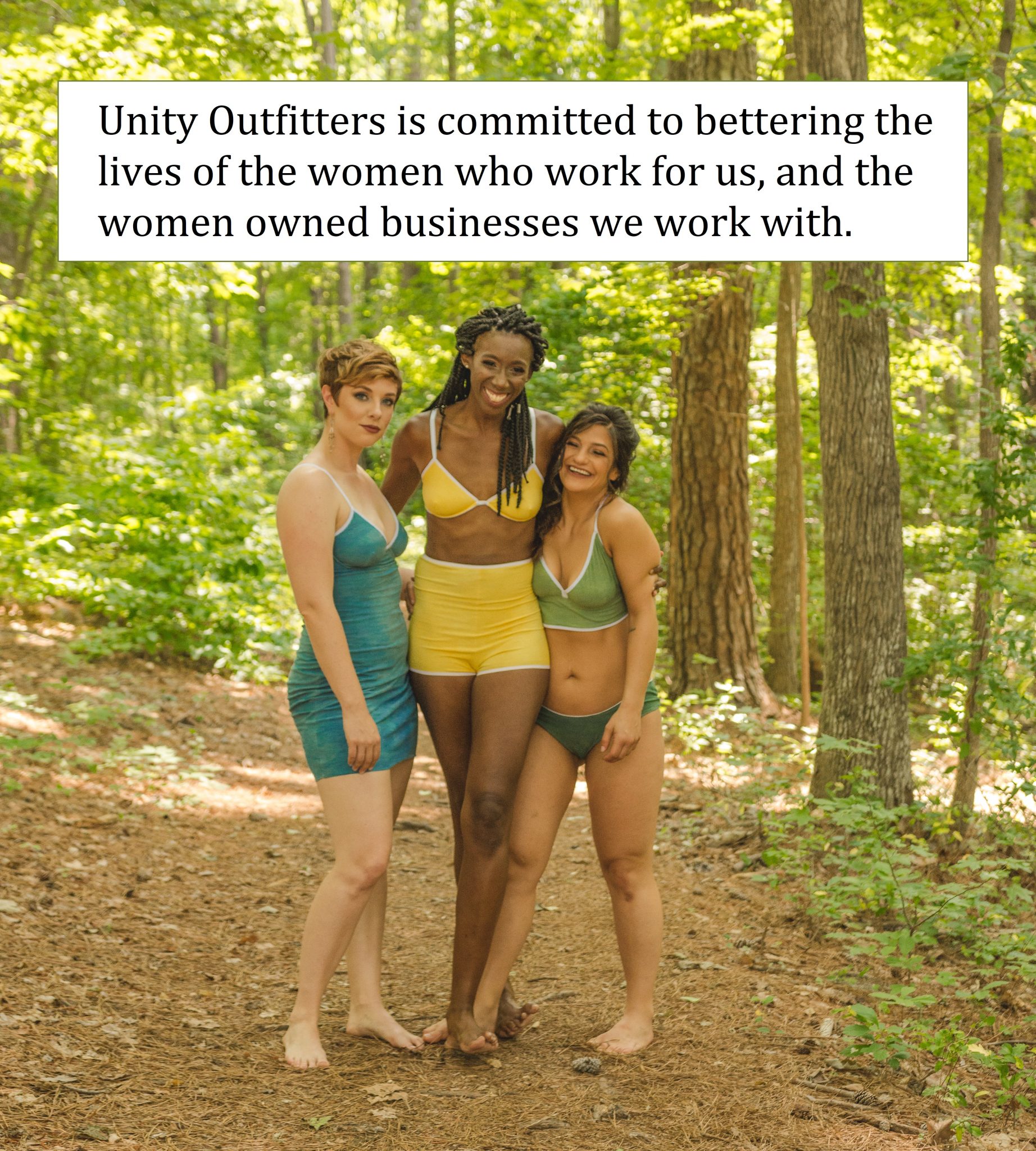
Unity Outfitters was founded by Katina Gad based on the belief that what we put on our bodies matters as much as what we put in our bodies. With a recent collection launched on Kickstarter using Botanical Colors’ dyes, Gad is looking for support to produce her bras, bralettes, panties, and slip dresses that are all made in the USA by women. The entire collection is size inclusive, ranging from a size XS up to a XXXL, and their underwire bras range from cup size 30A to 45J.
Pushing the boundaries of sustainability in a few directions, Gad’s collection has been designed, cut, sewn, and naturally dyed by hand in North Carolina, all within a 50 mile radius. She currently employ a small network of single mothers to do production sewing but funding from this campaign will enable her to hire and train more women locally, providing them with the opportunity to better support their families.
We caught up with the founder/designer and asked her a few questions about natural dyes and sustainability.
Can you talk about how you got into natural dyeing fabric and why it matters to you as a designer?
I first got into naturally dyeing fabric while volunteering with a women’s weaving and dyeing cooperative in Guatemala in 2010. They exclusively use natural dyes using recipes that were handed down to them by their ancestors, seeing the extensive number of colors they are able to produce encouraged me to learn more and start experimenting and learning for myself.
At that time I was already into using herbs and plants for natural remedies and for everyday life, and I was seeking to eliminate more toxic synthetic chemicals from my environment and the world in general. This curiosity led me to research more about how dangerous synthetic dyes are for people and the planet, and after that research was done, I determined I would use and advocate for the use of natural dyes whenever possible in my career in the fashion and textile industry.
I may just be one person with a start-up business, but I have the choice to do better, and to produce apparel that isn’t destroying our waterways or harming the people who live nearby them. We all share one planet and one ocean, keeping it safe should be a priority for everyone.
Sustainability is playing a larger role in how apparel is made. What shade of green are you in the sustainability spectrum and how do you hope to get even greener?
I would like to say I’m a deep green, maybe olive green would be most accurate considering my family is from Syria where olive trees flourish. I currently am using a GOTS certified fabric that is a blend of organic cotton and soy, my sew-in tags, packaging, and hang-tags are all made from recycled materials, 90% of my trims (elastic and buttons) are deadstock that I rescued from going into a landfill, my dyes/scours/mordants are all natural (and organic when possible), all the patternmaking/samplemaking/ cutting/sewing/dyeing is done within a 150 mile radius so our supply chain is pretty compact. I am doing my best to build an entirely sustainable and environmentally friendly product and company. One way I hope to get greener is to start having our fabric produced within North Carolina. There are fabric manufacturers here but for using for a lingerie application – I’ve not really found a good option that is also a non-synthetic option. I’m also constantly on the lookout for natural deadstock fabrics that I can intercept from the landfill, but most of the deadstock fabric I find that would work for lingerie is synthetic and not able to be naturally dyed.
What’s been the biggest challenge for you as a designer wanting to do better for people and planet? Do your designs suffer because of your attention to being sustainable?
The biggest challenge for me as a designer who wants to do better for people and the planet has been fitting into the normal cycle of producing multiple lines of products for each season or month. I’ve always found it to be ridiculous to need to create or buy new products every few weeks, most of these types of products aren’t made or intended to last, and designing a garment that is destined for the trash is far from my principles as a designer and an environmentalist. When I did try to cater to these seasonal cycles my designs did suffer because I was trying to produce trendy items. I feel that my strength as a designer is in making classic pieces that are seasonless and timeless, so being sustainable if anything is an asset to my work.
Want to support Katina and the good work she’s doing? Head on over to her Kickstarter that’s now live!

